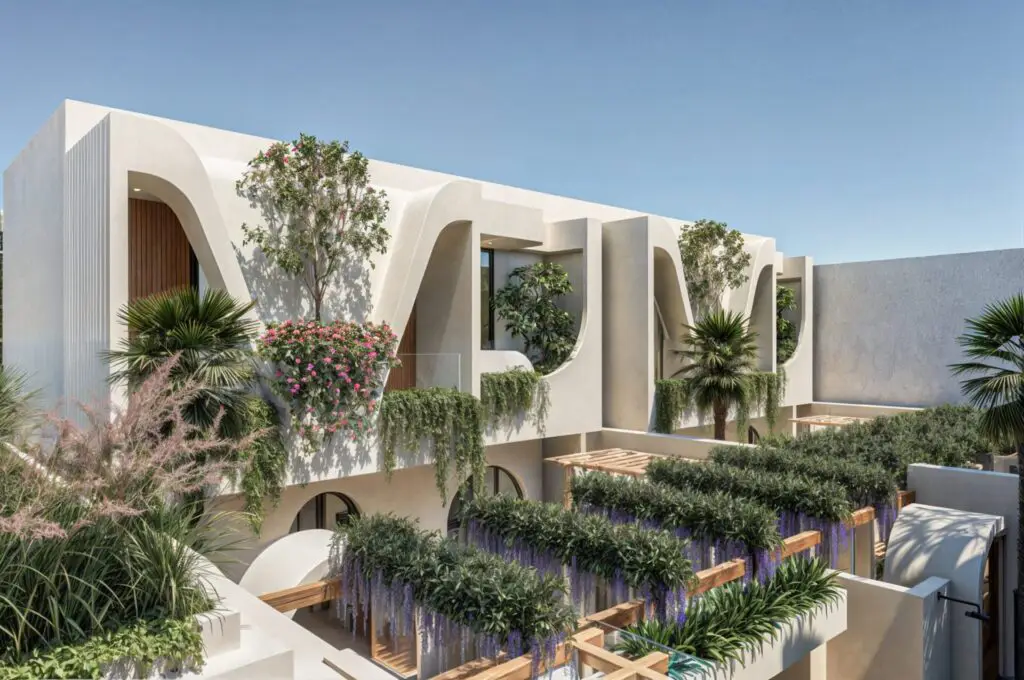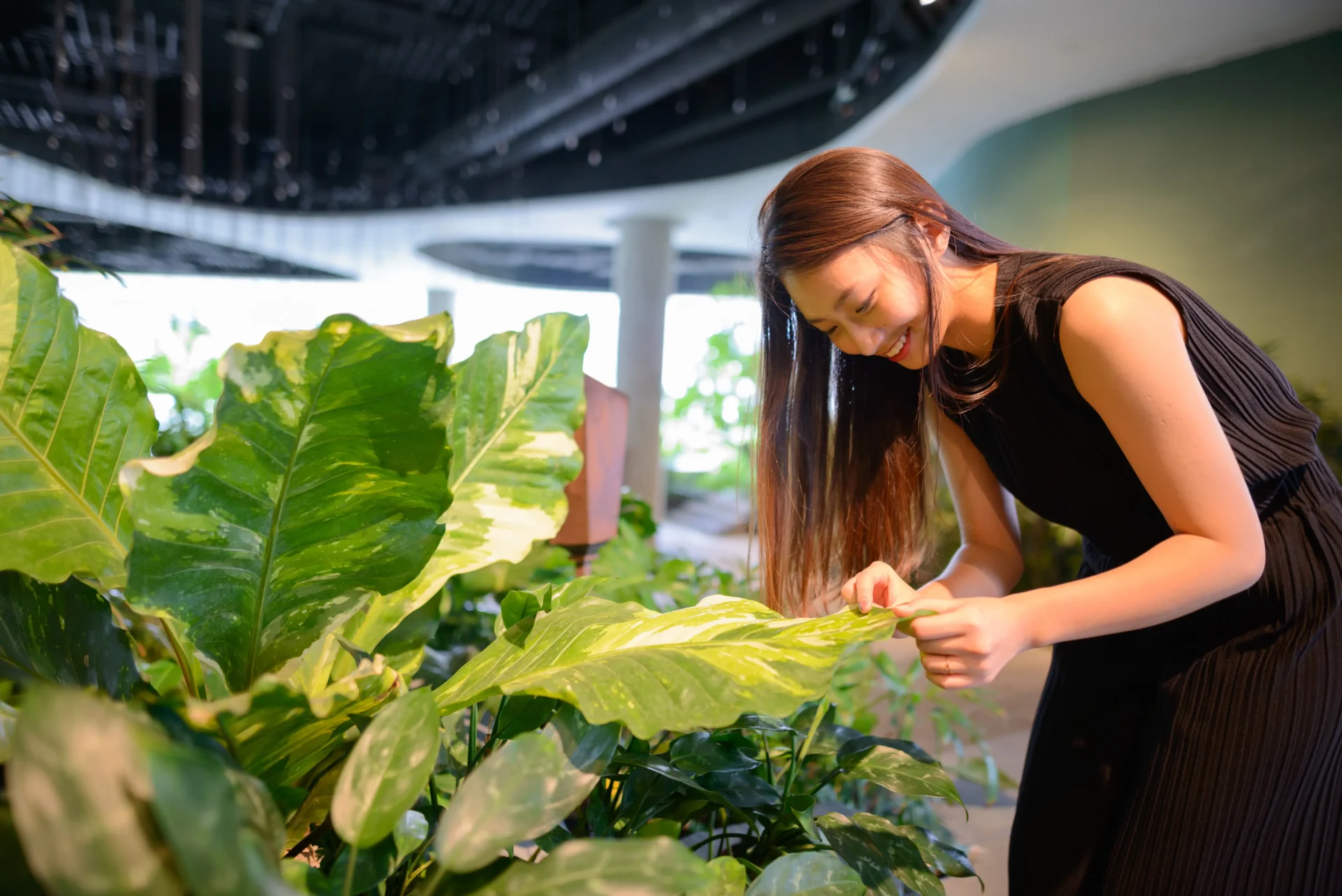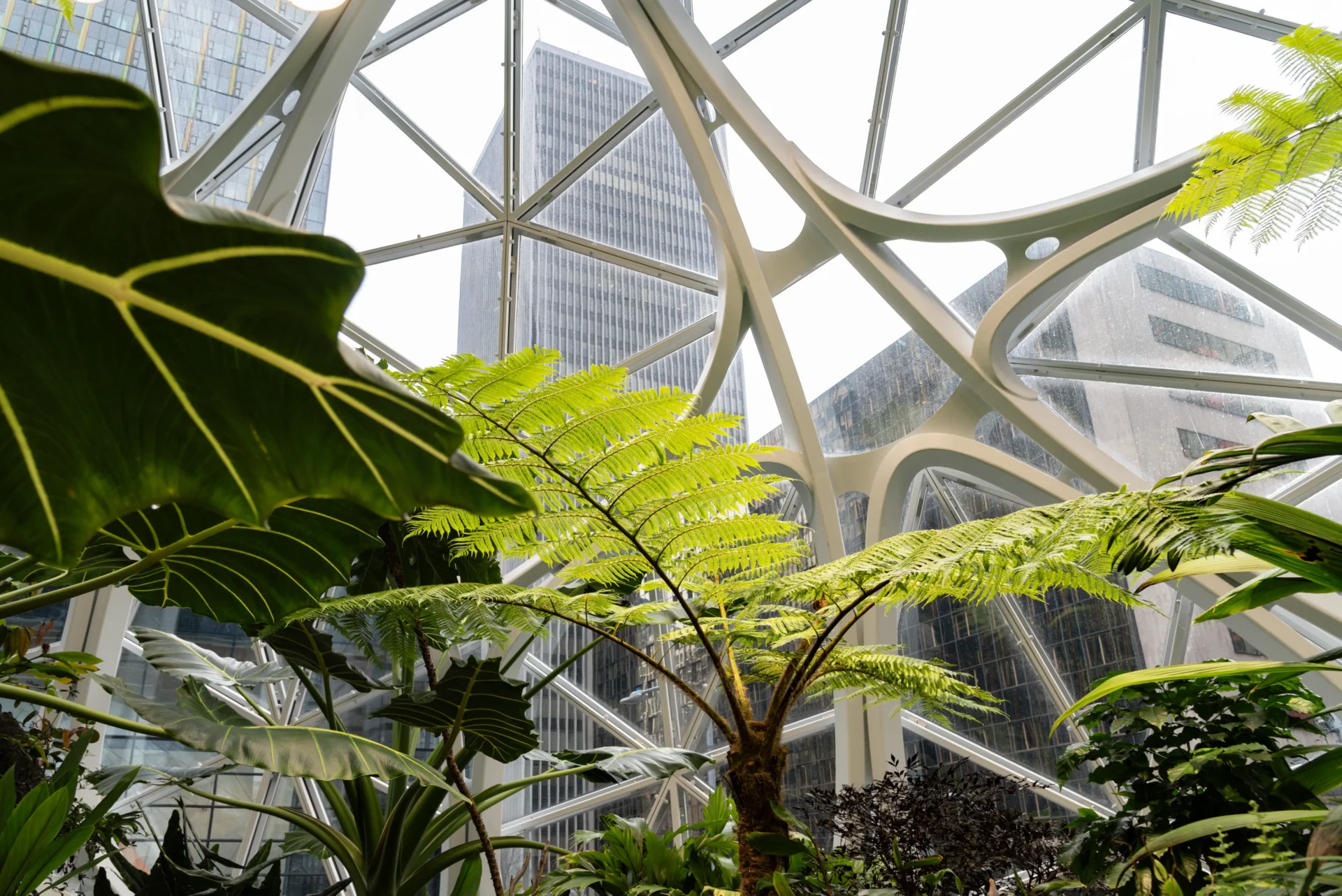
Biophilic architecture - In today’s fast-paced world, people spend up to 90% of their time indoors, increasingly disconnected from the natural world. This disconnection is not without consequences.
Studies have shown that environments devoid of natural elements can lead to higher stress levels, lower productivity, and a diminished sense of well-being.
As we seek ways to restore balance, this architectural design emerges as a powerful design solution, one that bridges the growing gap between people and nature. It is more than a design trend, it is a philosophy that reestablishes our intrinsic bond with the natural world.
That is why, in this article, Manon will explore what biophilic architecture is, how it functions, and why it matters in shaping healthier, more human-centered spaces.
What Is Biophilic Architecture?
Biophilic architecture is a design approach that integrates natural elements such as daylight, fresh air, greenery, and water into built environments.
It moves beyond superficial aesthetics by weaving nature into the very fabric of architecture and interiors. Instead of simply adding plants to a lobby or patio, biophilic design creates a multi-sensory experience that mirrors the natural world.
From layout to materials like wood, stone, bamboo, and expansive daylight that work together to emotionally and physically connect occupants to nature.
The aim is to construct environments that support how people feel, think, and live. It taps into our deep biological need to connect with nature which is fostering spaces that are not only beautiful but deeply restorative.
Core Principles of Biophilic Architecture
So how exactly does this look in practice?
1. Natural Light and Ventilation
When you prioritize fresh air and daylight, you are not just brightening up a space, you are helping regulate mood, energy levels, and even sleep cycles. It is one of the simplest, most effective ways to support everyday wellness with this architectural style.
2. Use of Organic Materials
Materials like wood, stone, clay, and bamboo do not just look beautiful, they give a grounding feel. They also bring a tactile warmth that subtly reminds us we are connected to something bigger than ourselves.
3. Access to Greenery
Whether it is a garden view or a vertical wall of plants, biophilic architecture sends a greenery that calms the nervous system and sharpens mental clarity. It invites the outside in and offers a moment of pause in an otherwise hectic world.
4. Nature-Inspired Forms and Patterns
Think curved walkways, imperfect textures, or soft fractals that mimic the flow of a river. These shapes make a space feel more intuitive and comforting.
Together, these principles help craft environments that feel truly alive. Imagine walking into a room and instantly sensing that you can breathe deeper, focus longer, and feel more at ease.
That is the quiet magic of this architectural design, it reconnects us with something we did not even realize we were missing.
Why Biophilic Architecture Supports Human Well-being

The benefits go far beyond visual appeal. These benefits are well-supported by research across psychology, neuroscience, and architecture.
For example:
- Employees in offices with natural light report higher satisfaction and focus.
- Hospital patients with views of nature experience faster recovery.
- In homes, biophilic elements support relaxation, better sleep, and overall happiness.
The Science Behind the Calm
A study found participants exposed to biophilic indoor environments showed 14% better short-term memory and improved emotional states. This natural environment improves our memory, creativity, and attention span which enhances our cognitive function.
Another example is, biophilic workplaces have demonstrated up to 26% increases in cognitive scores, alongside improved performance, again, creativity, and reduced sick days. And according to the Attention Restoration Theory, even passive exposure to natural scenes like plants or water restores mental focus and resilience.
Not only that, research in healthcare settings indicates views of nature significantly lower cortisol level, promote faster recovery, and decrease blood pressure and heart rate. Exposure to greenery and water has been proven to lower our stress hormones.
These insights highlight biophilic architecture as a powerful tool across residential, commercial, and wellness environments. Nature-inspired acoustics, materials, and light help restore mental and emotional balance which is helping our sensory healing.
Designing Interiors With Biophilic Intent

Biophilic principles also transform interiors. A home, office, or retreat space can become a sanctuary through thoughtful application of nature-based design.
Elements like living walls, indoor gardens, or water features create an immersive natural experience. Spatial layouts that mimic outdoor exploration such winding pathways, open ceilings, or layered spaces further reinforce connections to the outdoors.
Tips for Interior Integration
Practical biophilic design enhances interiors through:
- Green walls or indoor gardens that refresh air quality and visual appeal.
- Water features evoke peaceful soundscapes and sensory connections.
- Frame views toward natural landscapes whenever possible.
- Material layering with wood, stone, rattan, and soft fabrics to engage the senses.
- Spatial flow inspired by nature, such as curved pathways and layered volumes.
- Earth-tone palettes such as forest greens, terracotta, moss green, sand, and ocean blues that ground the atmosphere.
Each detail contributes to a multisensory and restorative space rooted in this architectural style.
Biophilic Architecture: Where Design Meets Culture and Why It Thrives in Bali
Few places on earth embody the spirit of biophilic design as organically as Bali. Its warm climate, lush flora, and deep cultural reverence for nature make it a natural canvas for this architectural design.
Besides, many Bali-based designs naturally embrace indoor-outdoor living, open-air courtyards, and sustainable local materials like bamboo, reclaimed wood, and volcanic stone. Bali's tropical setting invites architecture that breathes with the land. It is open, sustainable, and attuned to human rhythm.
For instance, communal spaces like temples and pavilions feature open layouts and sacred greenery. This traditional Balinese architecture prioritizes harmony with nature and biophilic honors these traditions while emphasizing sustainable, human-centered design.
The result is architecture that breathes with its environment and the people within it.
A Return to Harmony

Biophilic architecture is more than a stylistic choice, it is a commitment to designing spaces that prioritize health, harmony, and sustainability. As we rethink how we live and work, this approach offers a path forward: “one where beauty and well-being are inseparable.”
For those seeking to create soulful, nature-integrated spaces, we invite you to explore biophilic-inspired design with Manon Design Studio.
Our design studio is based in Bali, Indonesia, and established in 2014 by architect Brahasata Indra. Manon specializes in designing spaces where nature and people coexist harmoniously, guided by the mantra, "Nature Inspired, Brand Defined," this brings sophistication, clarity, and a deep respect for identity to every project.
Let’s build something that breathes with you. Contact us now!
